A sweet recovery: Group helps relocate endangered honeybee colony at Edmond home
EDMOND — Busy bees excel at taking care of themselves.
But sometimes, a little bit of sweet intervention used to move an endangered colony can get everyone buzzing about the important, beneficial roles the insect plays in our lives.
Beth and Tom Menasco pollinated the topic earlier this year when they let Edmond-area residents know on a social media site know they were going to help a homeowner on the other side of town rescue a bee colony whose hive was in danger of losing its home.
The Menascos enlisted the financial assistance of a local chiropractor and a local tree-trimming business to make good on their promise one cool Saturday morning in March.
At the end of the day, an eight-foot section of post oak enclosing the hive and its colony was strapped about a dozen feet off the ground to another tree on the Menascos' five-acre property in northwest Edmond.
Just yards away, bees came and went from bee boxes holding colonies and their hives the Menascos started populating with a swarm of local bees they were able to capture about eight years ago.
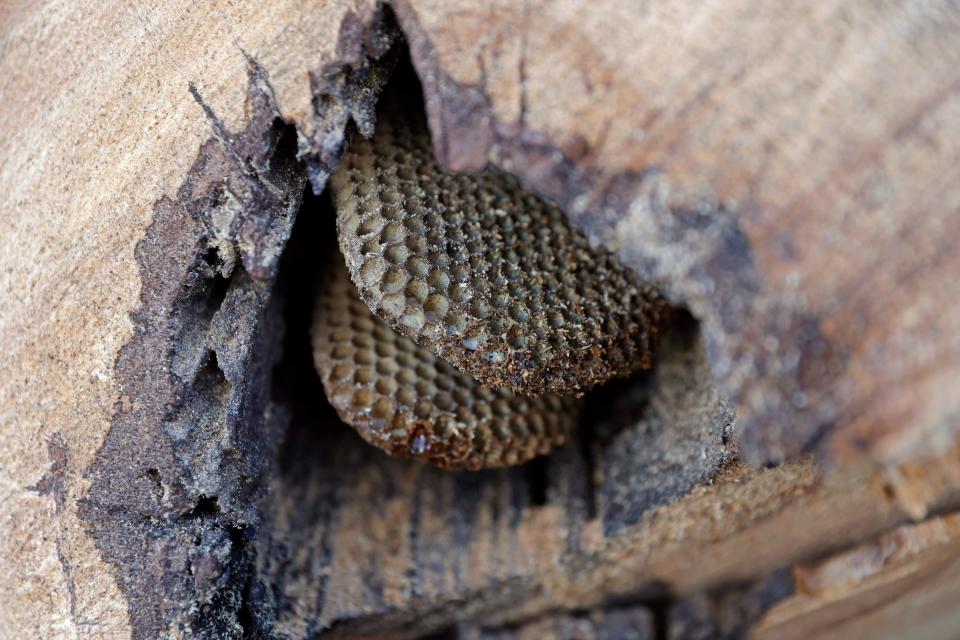
'Hive mentality' triggers swarms each year
During winter months, a colony numbers about 5,000 bees.
But when growing season is in full swing and pollen supplies are plentiful, a colony can swell in size to as many as 50,000 bees, creating severe overcrowding inside a hive that signals the collective it's time to spread out to allow for future growth, Tom Menasco said.
More: Health benefits of honey: 4 benefits plus who should, and shouldn't, take raw honey
The colony's living queen goes with the swarm, after her caretakers prepare her for the journey by cutting her food intake and getting her to move around so she can fly while others search for potential homes.
While it might take a day or two, the swarm and its queen settle into a new home, where the process starts all over again.
Bees, Tom Menasco explained, carry out different tasks inside of a hive. Some endlessly journey to and from the hive to bring other bees pollen and minerals they use to produce wax used to build the honeycomb where honey is stored.
Others guard the hive and honey, while others keep it clean and others care for the queen and the colony's larvae.
A queen bee can live for five years, or longer. But depending on their tasks and time of year, other bees making up the colony may live just 40 days.
An offspring queen laid by her successor is cared for in the existing hive after the reigning queen leaves, he said.
Swarms matter because they keep bee populations plentiful.
Bees are pollinators, and pollination is a crucial part of seed or fruit production that impacts how much is grown, the U.S. Forest Service says.
More: 'Fully vaccinated queens': First vaccine for honeybees approved in US
Native bees in particular that are maintained by a mix of plants offering nectar and pollen throughout each year's growing season help increase the likelihood area plantings flourish, bolstering local ecosystems.
Honey from native bees is highly coveted because of its taste and purity. Its anti-inflammatory, antimicrobial, and antioxidant properties also could play therapeutic roles in treating diseases, the National Library of Medicine reports.
A swarm in the wild has about a 10% chance of survival, often because of circumstances beyond its control.
The Menascos captured their first swarm of this year using a trap on their property April 1.
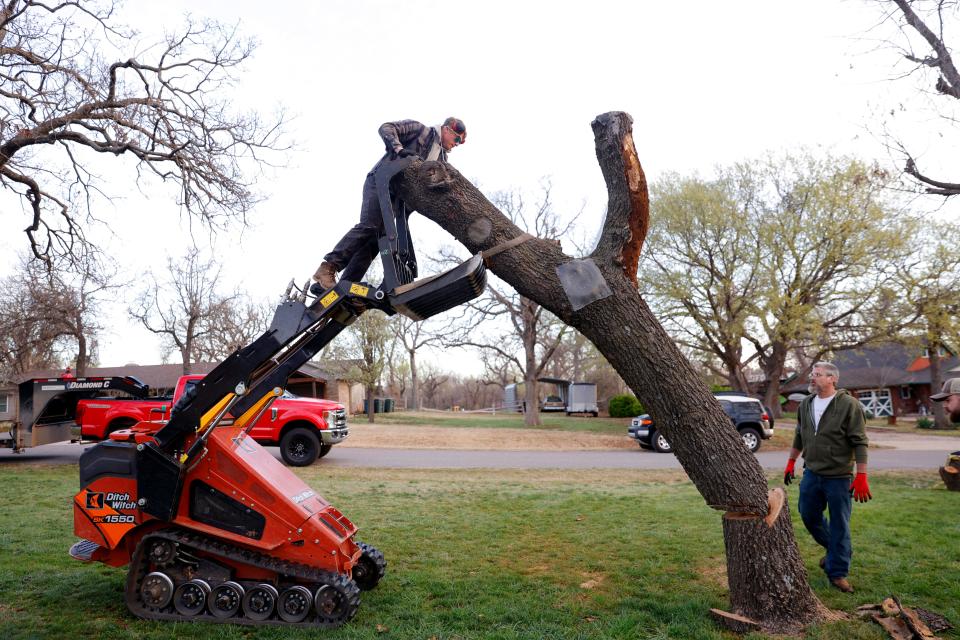
Family enlists help from Menascos to save bees inside tree before property sale
Humans who care for bees sometimes seemingly can adopt a bee colony's mentality.
Kimberly and Aaron Peterson, preparing to sell their home on Edmond's east side, spent more than eight years watching a colony of bees living inside a post oak tree in their yard and wanted to be sure it would survive when they left their property behind.
"We've enjoyed them," said Kimberly Peterson, who said they loved to watch them thrive as they kept their garden and plants pollinated. "Every year, we loved to see them become active. My husband and I would stand at our window or in our yard and watch them all the time.
"But we didn't just want someone who purchases the home to kill the bees. If we don't have bees, we don't have food. We don't have all the necessities of life," she said. "There needs to be more education."
The Petersons found the Menascos on Facebook, Their swarm catching service also is listed online by the Oklahoma State Beekeepers Association.
The Menascos could have hung some swarm traps to capture and move at least some of the bees, but this job had time pressures and was more complex.
So, they shared the Petersons' desires with Dr. Joren Whitley at Oklahoma Chiropractic, who also knew about bees and their benefits.
"My family (in eastern Oklahoma) has two small hives with bees, and they have always been fascinating to me," Whitley said. "Having a really great bee population nearby is something I have always thought was important."
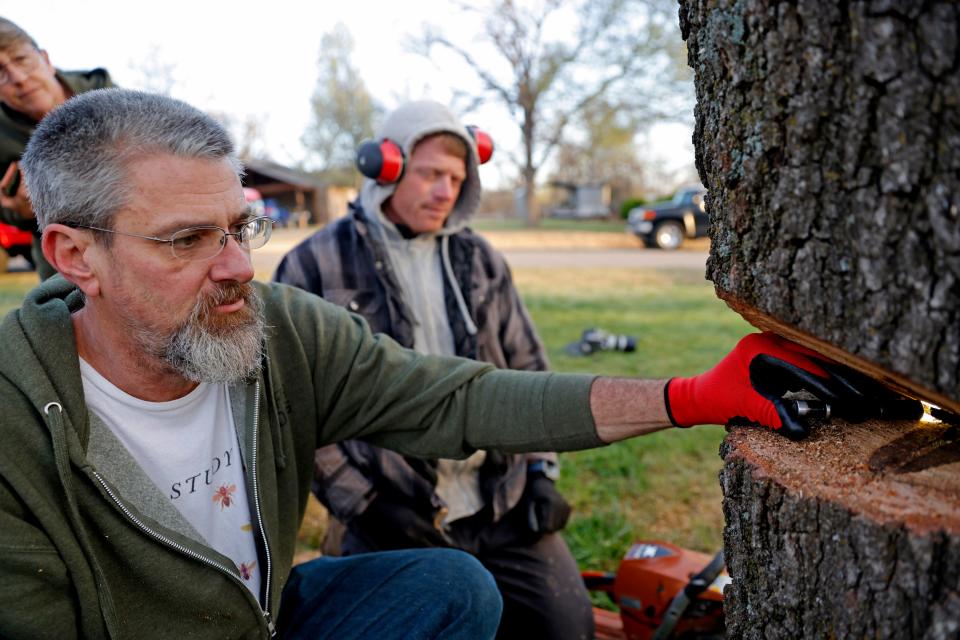
Whitley, in turn, connected the Menascos with Taylor Mick, of Top Notch Tree and Landscape in Edmond, telling both Mick and the Menascos he would cover the cost of the move.
"I wanted it to be done correctly, and what a great way to connect two people that I know for a great cause," Whitley said.
The morning of the move, Tom Menasco screened the entrances to the hive so the bees couldn't get out, then worked with Mick to carefully remove the section of tree enclosing the colony and set it on a flatbed trailer so it could be transported to its new home on the beekeepers' property.
Mick said the early-March relocation of the Petersons' colony was his second, and added he hopes to do more.
In fact, he and the Menascos already are considering a similar move of a tree-encased hive in The Village.
"A lot of people just don't know" a hive can be inside of a tree, and just call an exterminator to have them taken out, he said.
Moving colony of bees living inside of a tree is a challenge because it requires preserving as much of the hive as possible while minimizing any disturbance the process could cause to the colony it hosts, Mick said.
"I like bees and honey, and I know they are slowly going extinct. It is good for the flowers and good for nature in general to protect them as much as possible," he said.
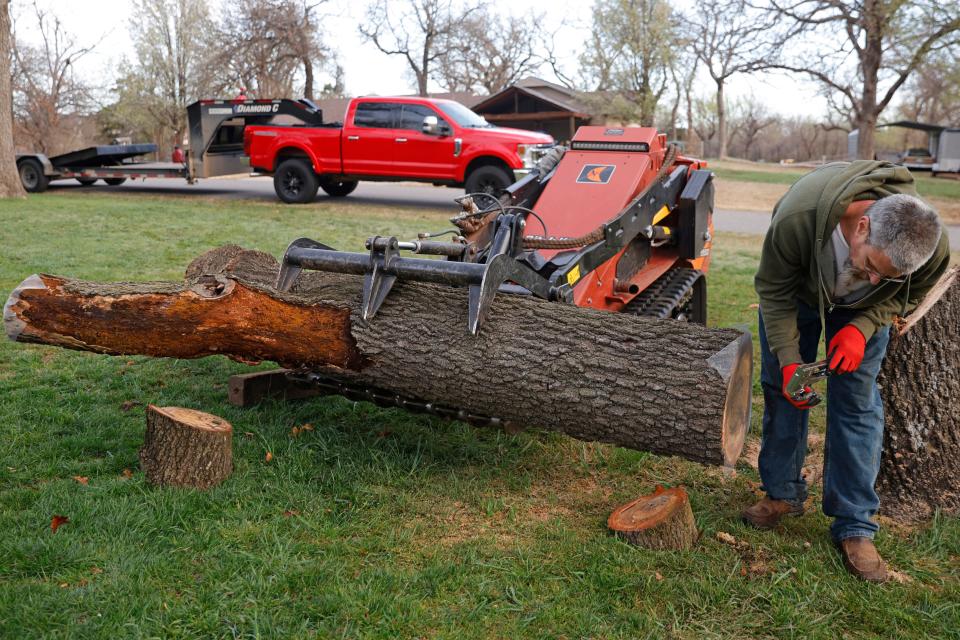
Swarming their way into a passion
After raising five kids, Beth and Tom Menasco wanted to stay busy.
"We were looking for something we could do with our property that we might be able to get some income from, and Beth said, 'let's try bees,' " he said.
They started out by buying bees to set free on their property, but were disappointed after a first, then second colony perished.
Meanwhile, he happened across an audiobook about bees titled "Honeybee Democracy" penned by Thomas D. Seeley, a Cornell University biology professor who's spent a career studying the insect and its behavioral patterns.
As he learned more about bees and their behaviors, Tom Menasco changed his strategy.
"I realized I just needed to catch them," he said.
Menasco built a swarm trap — an enclosed box baited with old bees wax and a pheromone that signals a queen is inside — to attract scouts hunting for places to establish new hives.
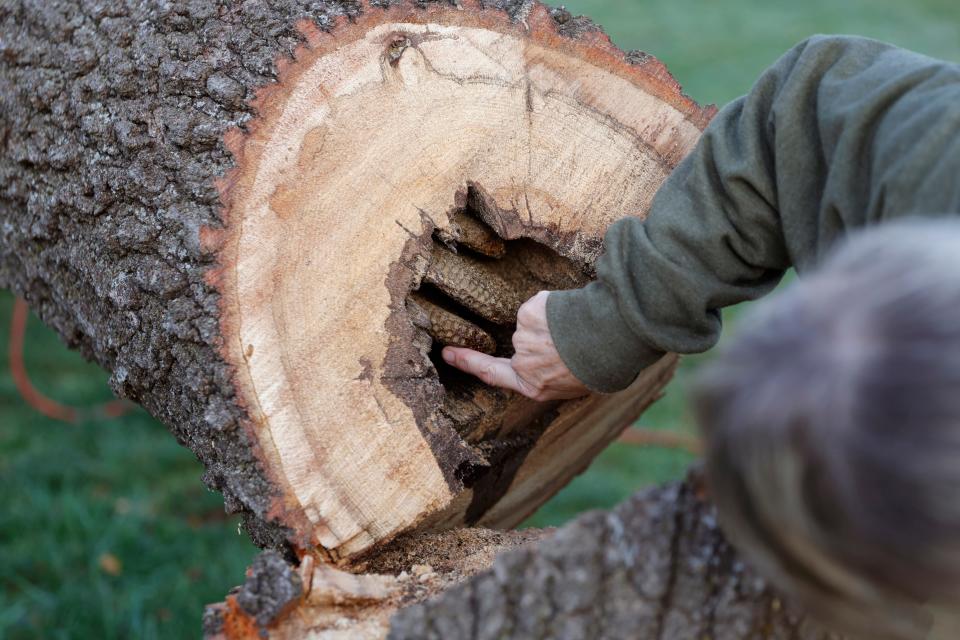
Then, he hung it in a tree near where an established colony thrived.
"I try to build a pleasing home site, something they are going to like," he said.
Over time, the Menascos have let nature take its course, allowing its flourishing colonies to establish more than a dozen treatment-free hives on their land and harvesting the honey they produce annually.
They sell the honey at various community events and at a few select retail locations in Edmond, Arcadia, McLoud and south Oklahoma City. Their honey also is sold by Whitley at his office through his efforts to promote quality, local goods and services to his patients.
"I want my patients to get the real thing that will help with local allergens, or something they can put on wounds for wound care. The real taste of honey is something you never forget," Whitley said.
But honey sales aside, everyone involved in this story is passionate about taking care of bees.
"We still sell honey, but it (the money those sales bring in) all ends up going back into the operation," Tom Menasco said.
"We got into saving bees. Wild bees are the ones that can survive all the diseases and pests that are out there. So I like catching swarms, especially wild swarms. I want the bees to live on their own. If I die, the bees still live," he said.
This article originally appeared on Oklahoman: Edmond honeybees safely relocated from home thanks to group effort

